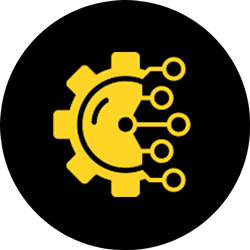Material Savings
Performance Enhancements
Design Freedom
Lightweighting of Parts
-

Concise footprint
-

Maximize Component Life
-

Multi part integration
-

Better material distribution in accordance with stress fields
-

Light Weighted Design
-

Flow Path Optimization with Simulation

- Low Volume Production – Complex geometries – low volumes – without tooling
- Weight Reduction – fuel savings – payload – less CO2 emission
- Compact – Lesser package space or reduction in size & ratio
- Efficient Production – Less material wasted due to layer wise manufacturing
- Low Volume Production – Complex geometries – low volumes – without tooling
- Increased efficiency – better thermal & fluid performance – increased stiffness & strength
- Part Consolidation – integration of multiple component & assembly time
- Maintenance & Repair or Overhaul – restored by adding material to worn-out surfaces


- Faster Product Development – quick test & validation – elimination of tooling
- Greater Flexibility Design – Quicker design changes due to faster PD
- Customization – Flexible unique components – Personalization possible
- Create Complex Geometries – Conformal cooling channels – Thin walls – Fine Meshes – Cold Plates for compact cooling etc.
- Compact & Efficient – Certain HX or heat sinks used in thermal management can be optimized. Efficiency can be increased or can be made compact in nature.
- Faster Product Development – quick test & validation – elimination of tooling
- Greater Flexibility Design – Quicker design changes due to faster PD
- Create Complex Geometries – Conformal cooling channels – Thin walls –Fine Meshes – Cold Plates for compact cooling etc.
- On-demand production – produce physical parts from digital files in a matter of hrs. for a component on demand.
- Customization – Flexible unique components


- Greater Flexibility Design – Quicker design changes due to faster Product Development
- Create Complex Geometries – Conformal cooling channels – Thin walls –Fine Meshes etc.
- On-demand production – Instant manufacturing on-demand reduces lead time. Also, downtime loss can be prevented.
- Super Alloys – Material development for specific needs for stringent quality demand.
- Reduced Cycle Time
- Reduced Warpage
- Improved Performance
- Conformal cooling
- Cost effective
- Reduced time to Market


- Part consolidation
- Complex design
- Lead time reduction
- Light weight and Fuel Saving
- Flexibility – Freedom of design.
- Customization – Unique Print per customer demand.
- Create Complex Geometries – Thin walls & Intricate features – Bionic Shapes – Twisted – Hollow design
- Shorter Lead Time
- Featherlight Design


- Patient Specific Implants
- Lesser weight materials with Bio-compatibility
- Lattice design, Cost effective
- Reduced time to Market
Vortex Tube
Satellite Camera Mount Bracket
Plate Heat Exchanger